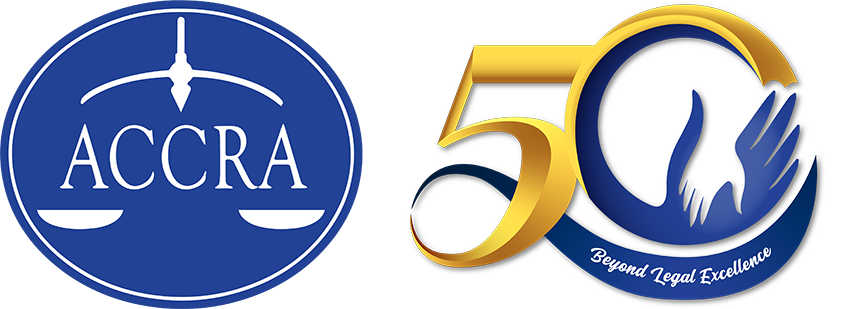MAP Insights
(Second of three parts)
This is an abridged version of the talk I recently gave to the MAP Corporate Governance Committee officers and members on the Revised Corporation Code which was enacted into law on Feb. 20, 2019.
“ONE MAN BOARD” AND ONE PERSON CORPORATIONS (OPC)
Under Sec 13, there is no more minimum number of directors or trustees. This has given rise to a frequently asked question — Does this removal now allow one-director boards for corporations other than one person corporations? And, is a one-trustee board likewise possible in a non-stock corporation?
My view is not yet at this time. Certainly not, for the sake of good corporate governance; and the fact that there are provisions on board meetings that impliedly do not contemplate one-man boards. For example, Sec. 52 provides that “Directors or trustees who cannot physically attend or vote at board meetings can participate and vote through remote communication such as video conferencing, teleconferencing, or other alternative modes of communication that allow them reasonable opportunities to participate.” Moreover, directors or trustees, by express provision, still cannot attend or vote by proxy at board meetings. This prohibition against proxies in board meetings means at least two directors or trustees are personally present and meet with each other. Thus, the least number of directors or trustees for an ordinary corporation should be two, in which case the quorum should also be two.
Further, it is clear that where no meeting is required, the section must specifically state so. Thus, for amendments of the articles of incorporation, Sec. 15 allows written assent of the stockholders representing two-thirds of the outstanding capital stock, meaning there is no need for a meeting. And for non-stock corporations, for similar amendments, written assent of majority of trustees and at least two-thirds of the members without meeting for either, are allowed.
The case of a one person corporation (OPC) is definitely an exception because by its very nature, it can have only a one-man board composed of the single stockholder. Indeed, provisions on OPCs clearly intend that while no board meeting takes place, there is an alternative way of decision making by its one-man board. Further, many OPC provisions are aligned with minimum corporate governance standards. While there is no other stockholder in an OPC, my view is it still has to meet corporate governance standards if only to protect the interests of stakeholders such as creditors, employees, suppliers, or customers, in particular, and the public, in general.
Firstly, the single stockholder cannot appoint himself as corporate secretary of the OPC. The corporate secretary has special functions that only he should perform. The single stockholder could be its treasurer but he should give a bond to the SEC in such a sum as may be required. He shall undertake in writing to faithfully administer the OPC’s funds and disburse and invest it according to its articles. The bond shall be renewed every two years or as often as may be required.
Secondly, Sec. 127 on Minutes Book states that the minute book shall contain all actions, decisions and resolutions taken by the OPC. Sec. 128, because the single stockholder cannot meet with himself, states that when an action is needed on any matter, it shall be sufficient to prepare a written resolution, signed and dated by the single stockholder and recorded in the minutes book of the OPC. The date of recording shall be deemed the date of the meeting. The minutes book is one of the records that the corporate secretary is expressly required to be responsible for and to maintain together with other records of the OPC.
Thirdly, Sec. 129 on Reportorial Requirements mandates the OPC to submit to the SEC apart from the annual financial statements:
- a report containing explanations or comments by the president on every qualification, reservation or adverse remark or disclaimer made by the auditor in the latter’s report;
- a disclosure of all self-dealings and related party transactions between the OPC and the single stockholder; and,
- other reports as SEC may require.
Lastly, the OPC is vested with limited liability, which means that only its assets and properties will be answerable for its debts and liabilities. Sec. 130 on Liability of Single Stockholder accordingly states that a sole shareholder claiming limited liability has the burden of affirmatively showing that corporation was adequately financed. Where the single stockholder cannot prove that the property of the OPC is independent of the stockholder’s personal property, the stockholder shall be jointly and severally liable for the debts and other liabilities of the OPC. The principle of piercing the corporate veil thus applies to OPCs as well.
Given these provisions on the OPC, the intention is even if it has only one director in the person of the single stockholder, the OPC shall comply with minimum standards of CG for the protection of its stakeholders.
EMERGENCY BOARD — A CASE OF SUCCESSION PLANNING
Sec. 28 provides when the vacancy prevents the remaining directors from constituting a quorum and emergency action is required to prevent grave, substantial and irreparable loss or damage to the corporation, the vacancy may be temporarily filled from among the officers of the corporation by the unanimous vote of the remaining directors or trustees. The action of the designated director-trustee shall be limited to the emergency action only and his term shall cease within a reasonable time from termination of the emergency or upon election of the replacement director, whichever comes earlier. A report to the SEC is to be given upon termination of the emergency. The nature of an emergency board whereby a corporate officer is selected to be a temporary director during an emergency is aligned with corporate governance in the sense that it is a form of succession planning for the corporation.
PROTECTION OF STOCKHOLDERS’ OR MEMBERS’ RIGHTS
Other amendments of the Code protect the stockholders’ rights to elect directors, attend meetings and inspect. Sec. 49 states that the stockholders’ right to vote may be exercised in person, through a proxy, or when so authorized in the bylaws, through remote communication or in absentia. Sec. 179 (n) reiterates that the SEC shall “impose or recommend new modes by which a stockholder, member, director or trustee may attend meetings or cast their votes, as technology may allow, taking into account the company’s scale, number of shareholders or members, structure and other factors consistent with basic right of corporate suffrage.”
Sec. 25 is aimed at the recurring problem of no quorum-no meeting paving the way for “hold over forever” directors or trustees. If no election is held consecutive times, or if the non-holding of election is unjustified, the SEC may, upon application of a stockholder or member, director or officer and after verification of the unjustified non-holding of the election, summarily order that an election be held. The SEC shall order the issuance of a notice stating the time and place of the election, designate the presiding officer, and set the record date for determination of who may vote. AND, notwithstanding any provision of the articles or bylaws to the contrary, the shares or members represented at such a meeting and entitled to vote SHALL constitute a QUORUM for conducting an election. So even if there is only one lonesome stockholder present, the meeting pushes through and election takes place.
The article reflects the personal opinion of the author and does not reflect the official stand of the Management Association of the Philippines or the MAP




